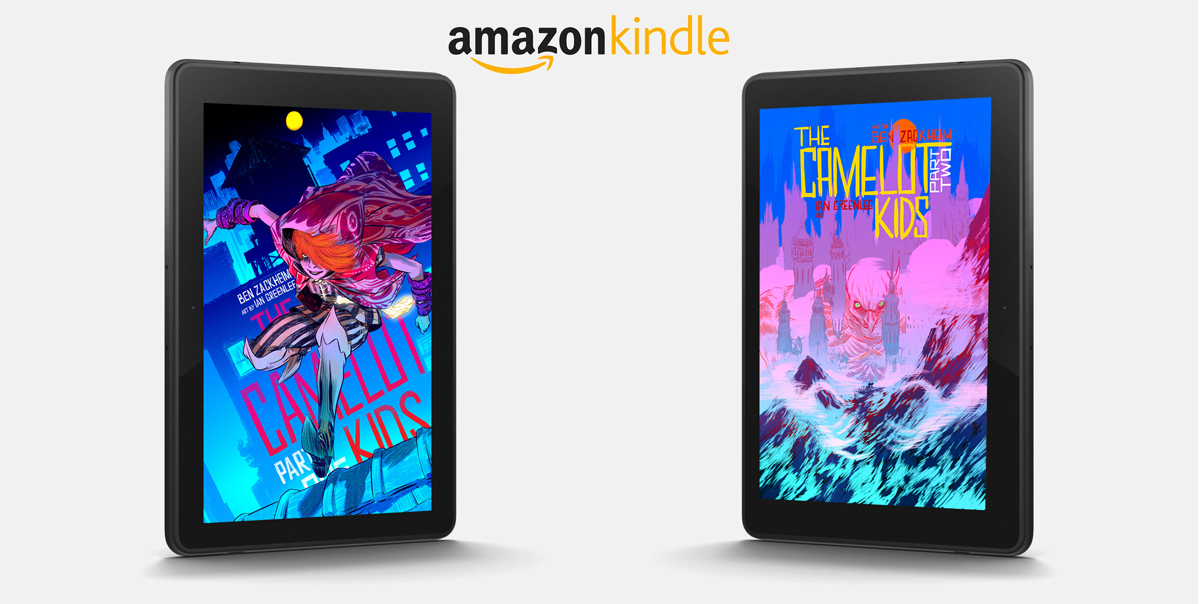
by Ben Zackheim | Oct 21, 2014 | Writing |
I’ve talked a lot about the softcover collection of The Camelot Kids coming out in December, 2014. Why am I so excited? Well, besides seeing the story all together in one volume, there’s the spectacular artwork of Ian Greenlee. Ian has been body slamming every single piece for The Camelot Kids eBooks (yes, in a good, loving way). His art is getting a lot of buzz in the illustration world. And readers LOVE what they’ve seen so far.
Here’s one review:
“I love love love this series!!
The illustrations are really really wonderful. I wish I had some to frame for my office.”
And another:
“This is the first in an exciting new middle grade series, by Ben Zackheim, with stunning illustrations peppered throughout, this one is sure to be a hit.”
I want to give you a peek at how we’ll be using the artwork in the softcover edition. From the start, Nathan Fox (Art Director and cover artist) has wanted the illustrations to emerge from the story. His meticulous sense of theme and intent are woven into every visual decision he makes. For instance the theme of The Camelot Kids: Part One was “Emergence” which translated into wonderful illustrations of our characters stepping into a new world. But the softcover will give us a whole new way to play with the theme.
Example?
Well, when Simon Sharp finds the vambrace in the grass in Part One, it’s his first step into Merlin’s domain. Simon doesn’t know it at the time, but Ian did a fantastic job of showing the confusing, dramatic moment. In the book, you’ll be able to see the drawing in all of its detail, and you’ll notice how some art appears to embrace the text of the story. In the two-page spread below, notice how the leaves flow from one page to the next, like ivy growing through the prose.
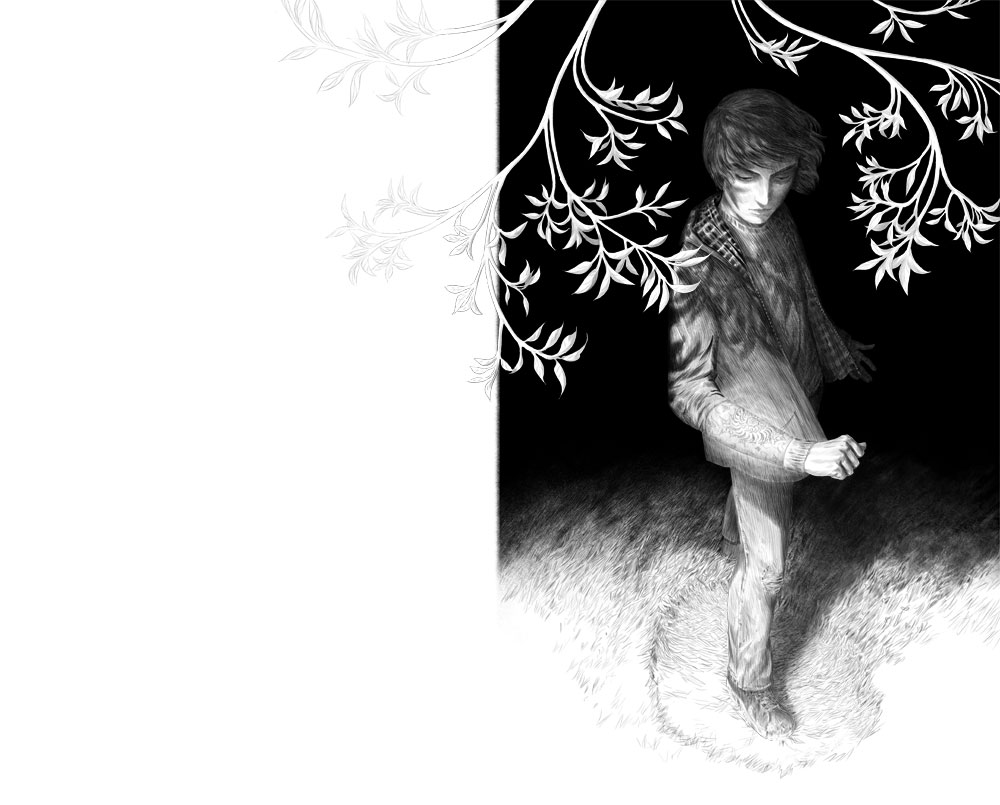 This is just one example of the beauty and attention to detail that you’ll find in The Camelot Kids: Book One, coming in December. Yes, THIS December ;-)
This is just one example of the beauty and attention to detail that you’ll find in The Camelot Kids: Book One, coming in December. Yes, THIS December ;-)

by Ben Zackheim | Oct 1, 2014 | Writing |
Little Boo is a pet fish. He was given to Merlin by his friend Myrtle on his 3712th birthday. Merlin, however, has no time for animals that don’t make themselves useful.
So he put Little Boo to work as the manager of his store/lab, The Spell. Hey, who better to manage people than a pet, right?
To get around the whole Fish-Can’t-Walk-or-Talk thing, Merlin built Little Boo a robotic body, powered by magic steam.
Welcome to the world of The Camelot Kids!
And here he is, making himself useful. Ian Greenlee captures the moment when Little Boo offers Simon and Maille Rose a tour of The Spell. It doesn’t go well, as you’ll see in The Camelot Kids: Part Two!
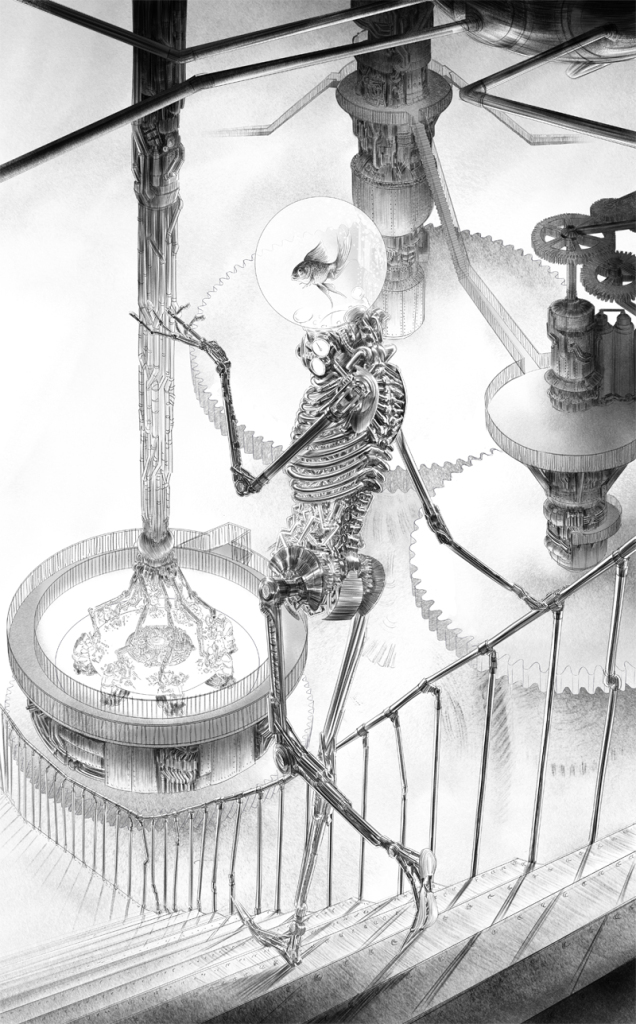

by Ben Zackheim | Sep 29, 2014 | Writing |
Here’s a little peek at Ian Greenlee’s illustration process on The Camelot Kids. He goes through many steps to bring us the fantastic glimpses into the world of Simon Sharp and Merlin.
Here you see his sketching, volume, perspective and FINAL steps. The piece shows Simon and Hector arriving at Uncle Victor’s castle for the first time.
The first piece is a sketch that he passed by me and Nathan Fox for feedback.
The second piece is a study on volume and shading.
The third piece explores perspective, light source and focus.
The last piece is the final.
Pretty cool, huh? Oh, be sure to zoom in on the final piece. It has a bunch of hidden surprises.
Get The Camelot Kids: Part One on Amazon now for $1!
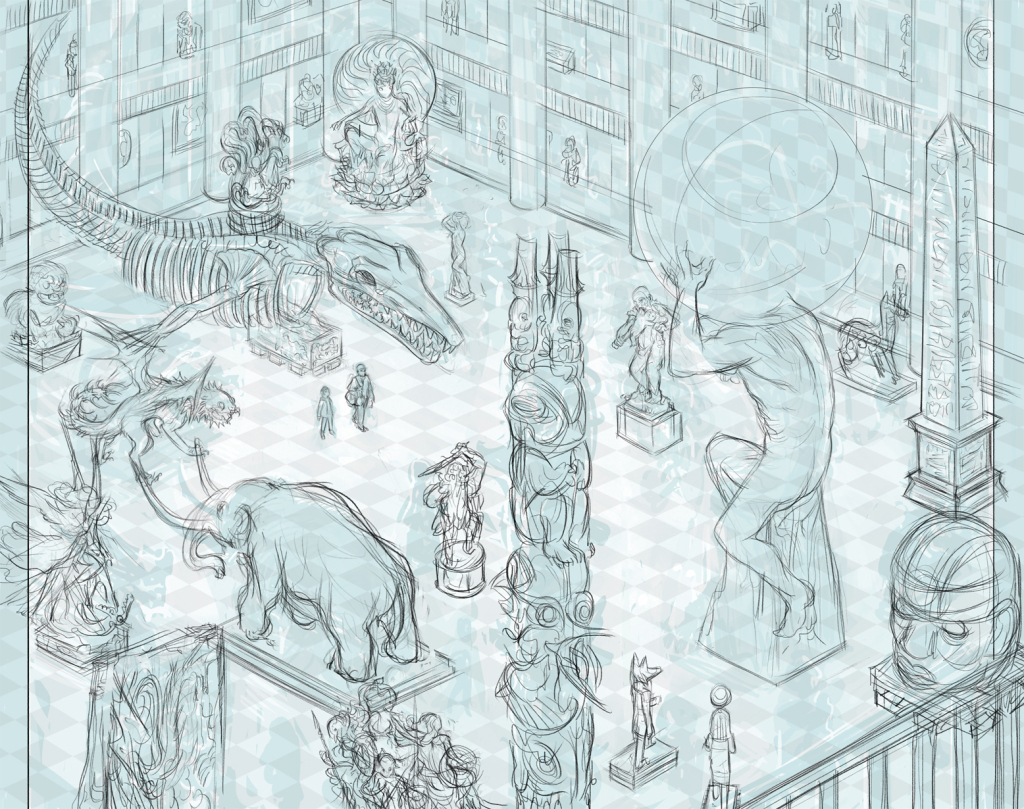
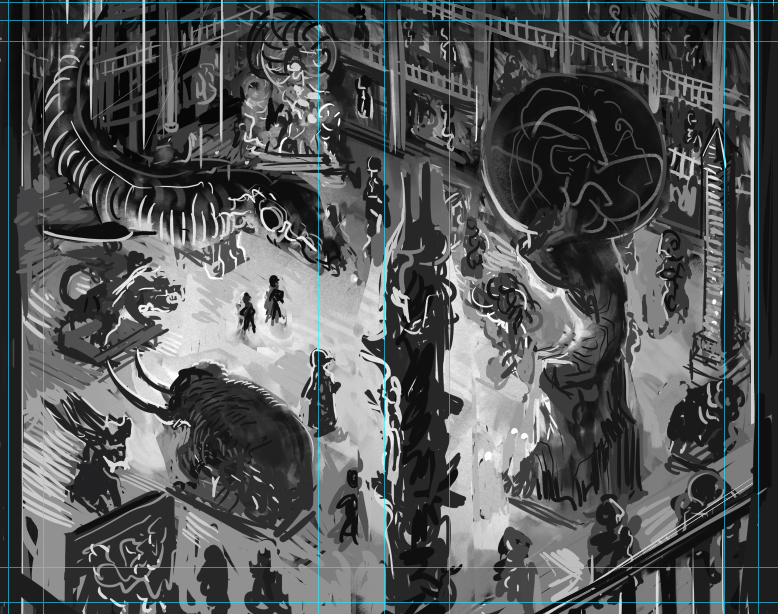
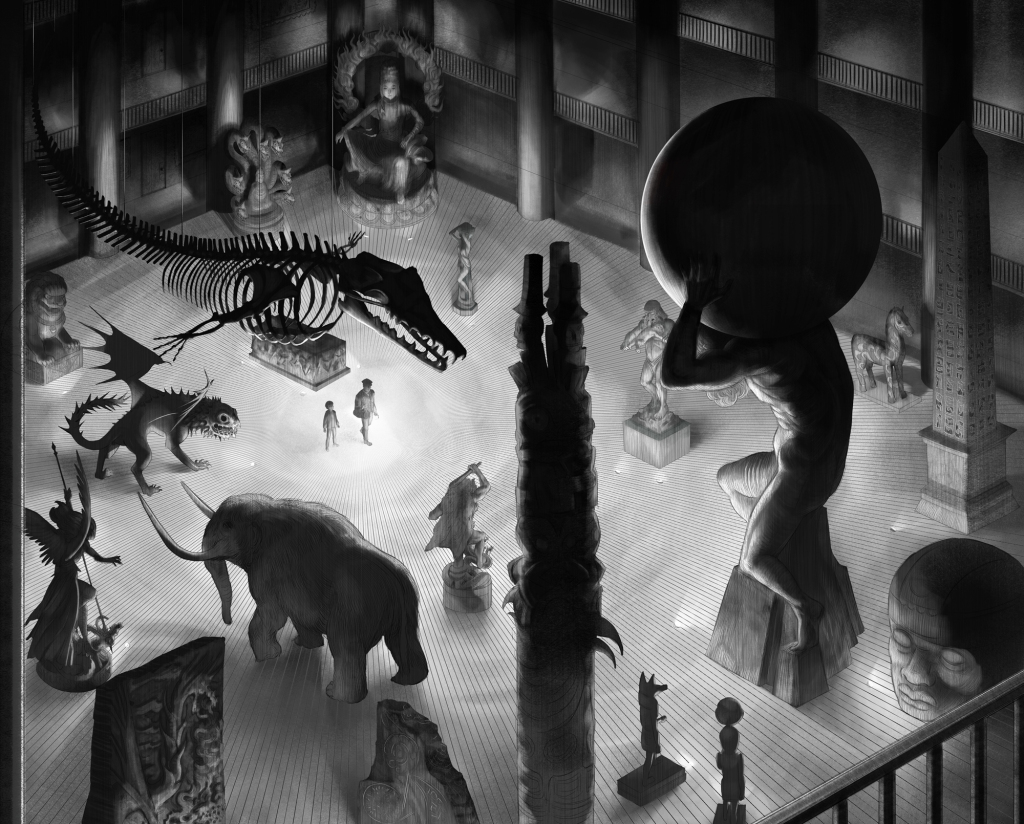
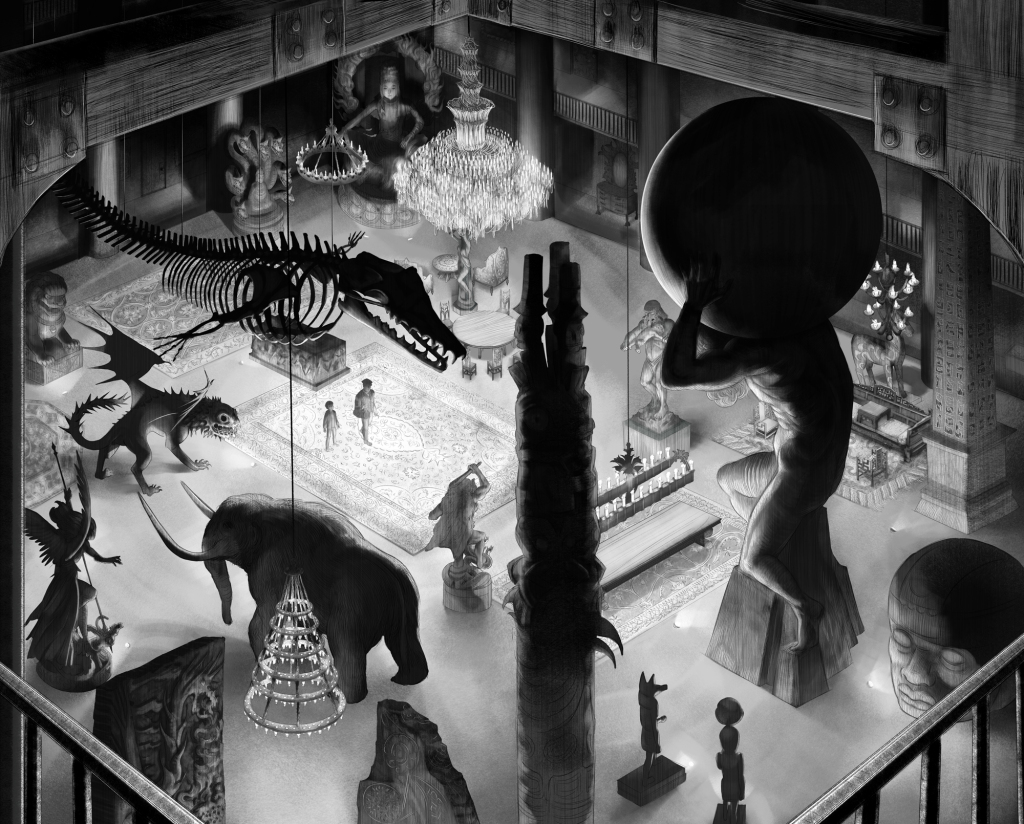

by Ben Zackheim | Sep 19, 2014 | The Camelot Kids |
Rukkush! The former apprentice to Merlin makes his debut in The Camelot Kids: Part Two. Ian Greenlee, the artist for the book’s interiors, tweeted this little peek at a new piece that shows the elf’s sinister grin.
And those fingernails!
I suppose that’s what you get when you’re stuck in a room for a thousand years with no nail clippers.
Be sure to pick up your copy of The Camelot Kids: Part One on Amazon. The ebook is only a buck and it might just make you see Camelot in a brand new light!

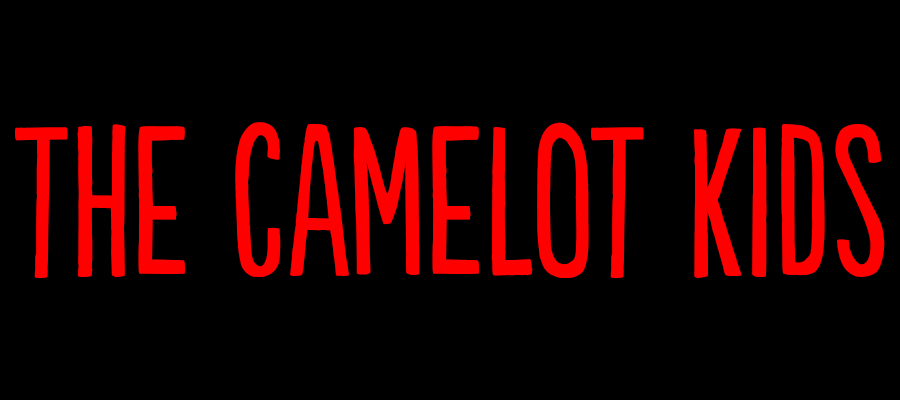
by Ben Zackheim | Sep 12, 2014 | The Camelot Kids, Writing |
Chivalry is the act of defending those who cannot defend themselves.
That’s a simplification, but I’m going with it (for now), and you can’t stop me.
The same way magic is the code that holds Harry Potter’s world together, chivalry is the code, the foundation and the social dynamic of Camelot.
Now that I’ve completed Book One, I understand that something in the core of the mythology was drawing my own sense of chivalry out of me. It was injecting these complex, flawed characters with a sense of doing the right thing, no matter the cost. Sure, the complex moments of bravery, stubbornness and kindness were emerging in a mystery/action/adventure yarn. But within the mask of story was a seed of humanity that I’d never considered deeply for my protagonists before.
An orphan helps an orphan.
A bullied student helps the new kid escape a gang.
Even those who live a life rife with heartache and hard knocks emerge chivalrous. No, especially those who live a life rife with heartache and hard knocks emerge chivalrous.
But why? How? Where does this instinct to protect those around us come from? What happens inside us when we drop our own interests and risk everything for other people?
The answer became clear as I wrote the book.
The dynamic of wanting to connect with people is the same dynamic that makes us risk everything to help them. In other words, our connection to each other, simply because we’re human, has costs as well as payoffs. For our humanity, we get friendship, love and support as a “payoff”. But does that mean that heartbreak, pain and rejection are the “cost”?
No. That was my revelation as I wrote The Camelot Kids.

The cost of this human experience isn’t heartache, pain and rejection. It’s chivalry.
Being loved, supported, hated, ignored creates an astonishing power to do the right thing for anyone — friend, foe, or stranger. That human connection is so complex that something in us is willing to give our lives for it in a split second.
For me, this revelation does something profound to my sense of modern life. Don’t we live in an insulated bubble? I’ve assumed that most of us reach a certain age of reason where we construct a world with as much love as possible, and avoid the most pain. It takes a while, but it seems to me to be a standard human thing to do. To the degree that we have control over our surroundings, don’t the vast majority of us expend a tremendous amount of energy on building comfort and avoiding discomfort?
While I still think the answer to these questions is yes, it’s clear that we have a Trojan horse of bravery, duty, kindness and chivalry in us. It’s rolled into our gut at around the same time we look at another human and realize we want to keep them close forever. And it’s solidified when we meet our first enemy.
I think it’s the most exquisite insight we could have today. I think mythology that reinforces this inherent power in each of us is what we all need right now.
Taking this idea further; our disillusionment with Arthurian lore is indicative of our disconnect with our own chivalry.
Prove it!
Okay. When was the last time we felt connected to the second most famous myth of our time? We get chance after chance in the Merlin or Camelot TV shows, the recent King Arthur movie — but they don’t resonate outside a small group of fans. It’s not because the efforts suck, necessarily (though some do). It’s that they’re stale. They treat chivalry like it’s a noble thing only, and not the complex force it is.
Chivalry is Gandhi.
Chivalry is Martin Luther King, Jr.
Chivalry is Malala Yousafzai.
The heroes of Camelot don’t need to tell the same thousand year story again.
The heroes need to be among us. More importantly, they need to be chivalrous among us.
So for all my humility and fear in tackling the lauded lore, my goal with my new book, The Camelot Kids, is to give the world a peek into Camelot in our time. I want to make Camelot fun again. And I want to do it in a way that’s respectful of the tales’ whimsy, boldness and deep conviction that to do right for others is to do right for everyone, including yourself.
After all, the more in touch we are with our inner Camelot, our sense of chivalry, the better off the world will be.

 This is just one example of the beauty and attention to detail that you’ll find in The Camelot Kids: Book One, coming in December. Yes, THIS December ;-)
This is just one example of the beauty and attention to detail that you’ll find in The Camelot Kids: Book One, coming in December. Yes, THIS December ;-)









